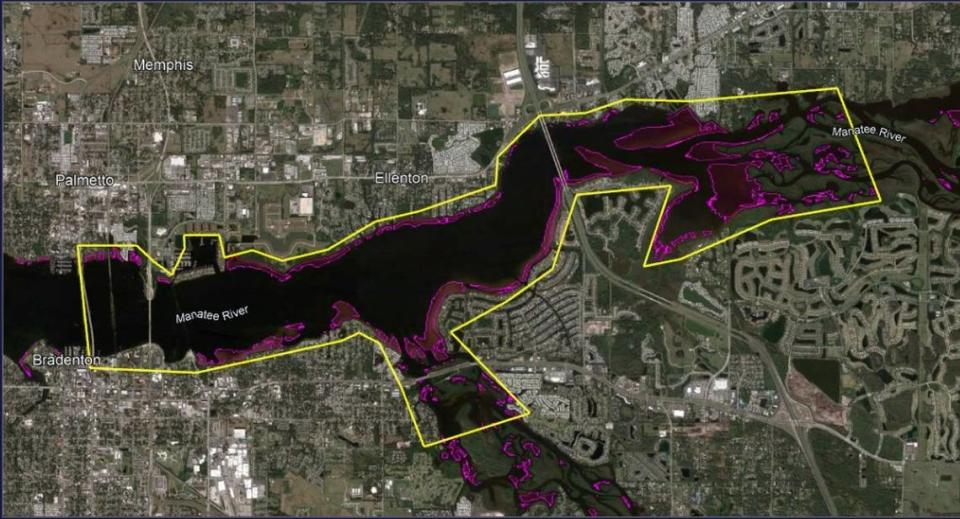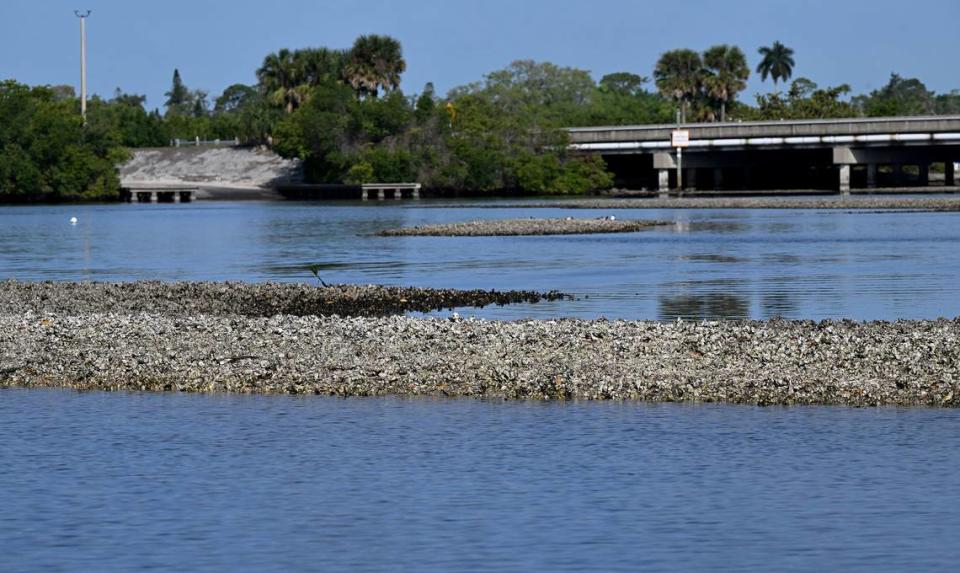‘Oyster River.’ Inside the multimillion plan to restore the Manatee River’s old glory
It was once called “Oyster River.”
Historical records highlight how shellfish once lined vast acres of the Manatee River that flows between Bradenton and Palmetto into the Gulf of Mexico and Lower Tampa Bay. Today, several local organizations and government agencies are working together to bring the oysters back and boost local water quality.
“I didn’t really associate the Manatee River with a lot of oysters. As I started digging in deeper, I found out I was wrong for the most interesting reasons ever,” says Damon Moore, founder and executive director of Oyster River Ecology.
Manatee River’s oyster reefs were numerous until near the end of the 1800s, Moore says. They were also likely bursting with life.
Today, we know that the many benefits of healthy oyster beds include stabilizing shorelines, filtering water, allowing seagrass to thrive and providing habitat for marine life like fish, crabs and shorebirds.
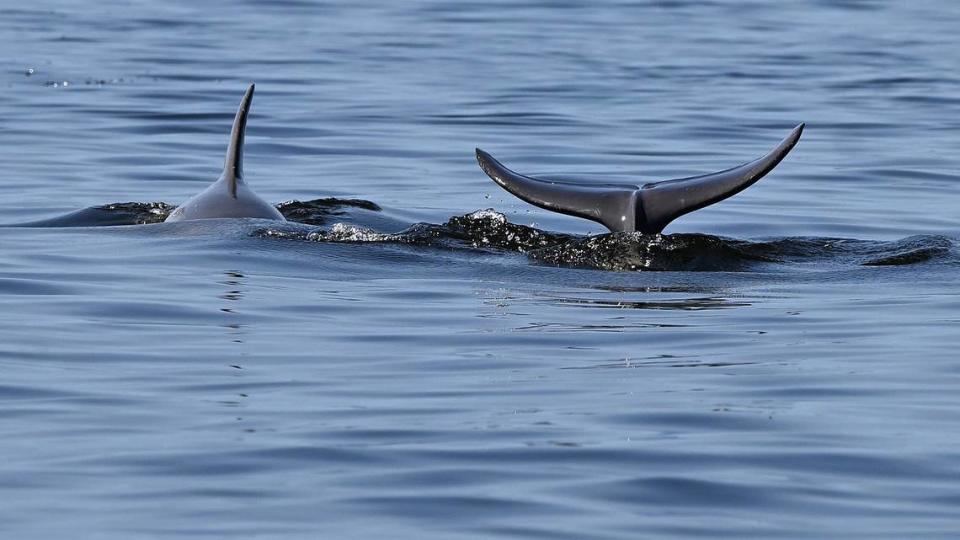
But where did all the oysters go?
As with most imbalances in the environment, the problem was people taking too much.
Moore found newspaper articles, government reports and firsthand accounts that pieced together how oysters were removed from the river by the shipload for food, paving roads and large-scale commercial harvest for building material in the 19th and 20th centuries.
A report from the United States Fish Commission, a precursor to NOAA Fisheries, outlined the decline quite plainly. A bounty of “oysters, oysters everywhere” in 1876 dwindled to “partially or totally depleted” by 1897.
“This is a resource that, at a large scale, was taken out of the river between 1875 and 1900,” Moore says of oysters. “We lost a major resource before most of our grandparents were born.”
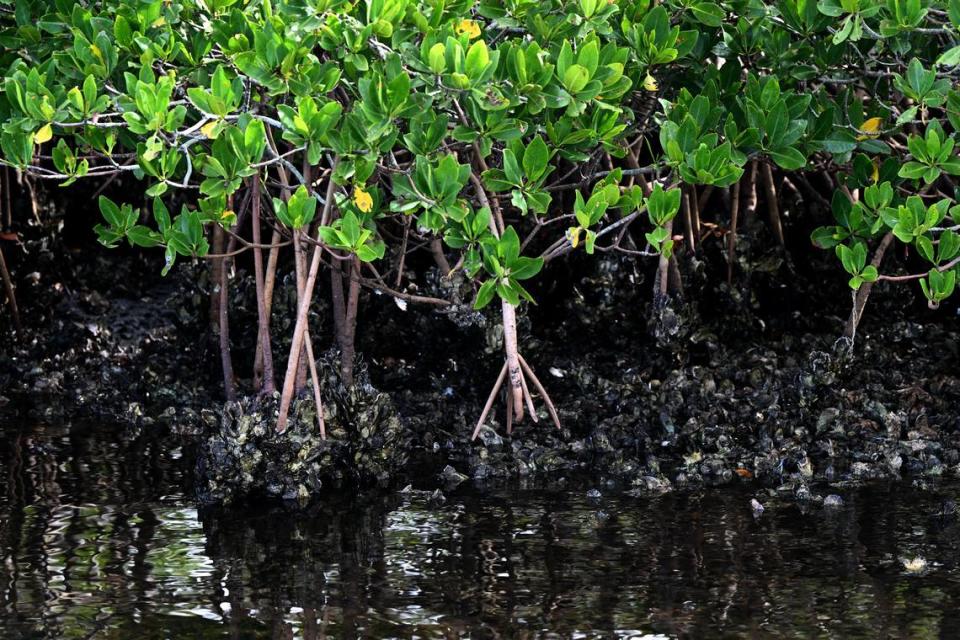
Why restore the ‘Oyster River’?
Local efforts have already shown that oyster restoration can work on a small scale.
An oyster reef installation project in Perico Bayou facilitated by Manatee County Government, Sarasota Bay and Tampa Bay Estuary Programs is now thriving, according to Sherri Swanson, the county’s ecological and marine resources division manager.
“It’s completely created from scratch,” Swanson said. “If you go out to that bar at low tide there’s blue crabs, conchs, wading birds. It’s just teeming with life.”
Moore founded his nonprofit in 2022 with a simple mission: ratcheting up local oyster restoration on a large scale, as fast as possible.
“The science is already there to support this. We don’t need to research more, we need to do it,” Moore says.
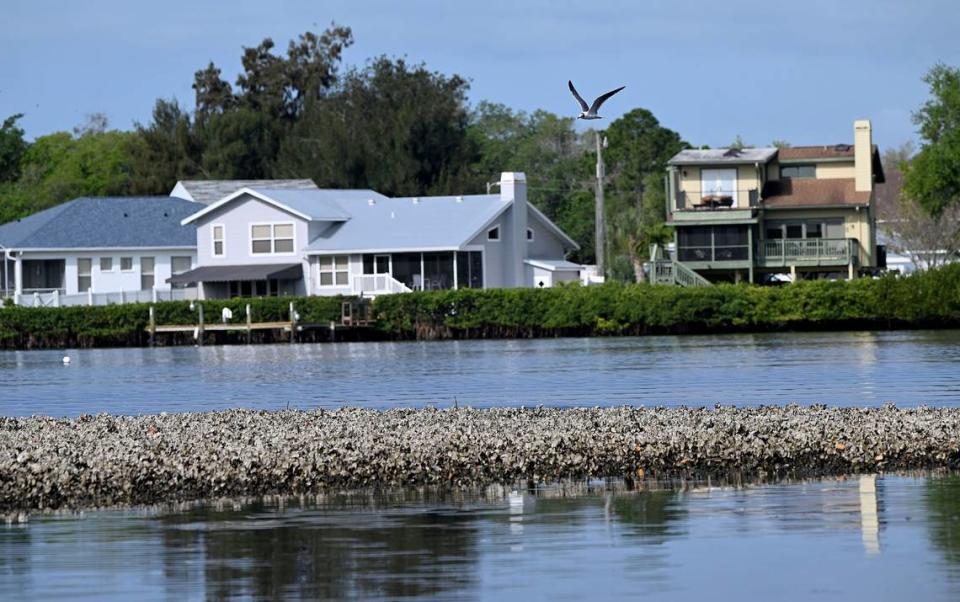
The research shows that oysters provide the literal bedrock of a healthy waterway. Places that have begun restoring oysters, like the Mid-Atlantic’s Chesapeake Bay, are already seeing the benefits.
They include removing thousands of fertilizer bags worth of nutrients from the water, increasing survival rates of commercially important blue crabs and increasing food and habitat for a variety of marine life, according to NOAA.
Moore’s nonprofit finds ways to get the whole community in on the restoration process, from education talks to field trips and hands-on volunteer work.
He’s also working with Manatee County Government to develop a master plan for oyster restoration.
Now comes a step that’s been years in the making.
With the planting of a 10-acre oyster bed set to begin in the coming weeks, Moore hopes to show that restoring the shellfish to their rightful home in the Manatee River can start making a difference right now — in local water quality, wildlife and ecosystem health.
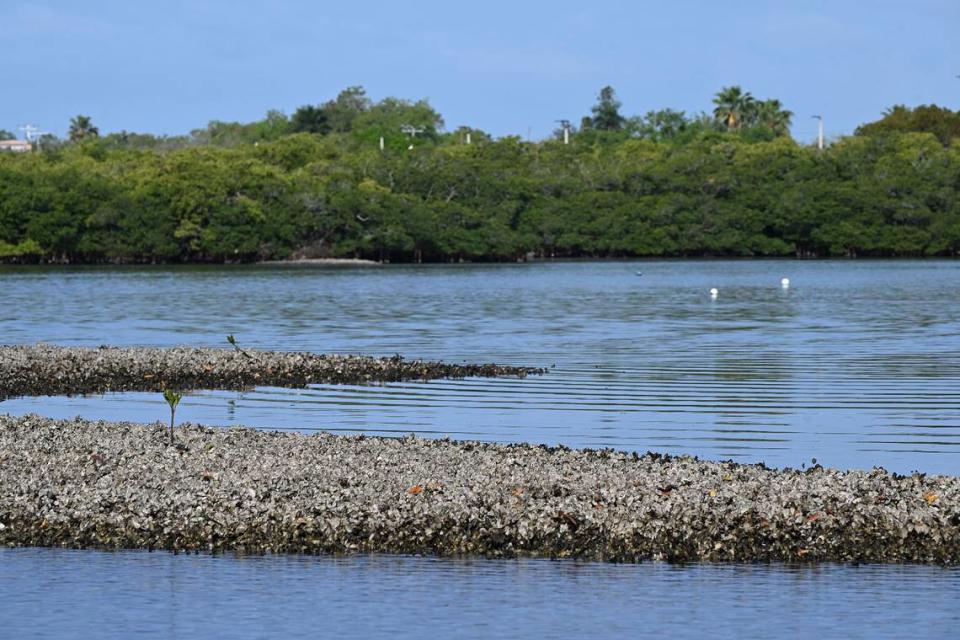
Scouting the Manatee River
Oyster beds won’t thrive just anywhere.
They grow best in a “Goldilocks” zone, Moore says — not too fresh, not too salty. Predators with a taste for oysters lurk in saltier water, preventing them from establishing large beds.
Using historical info, modern aerial maps and the locations of the few remaining oyster beds in the Manatee River, Moore and Manatee County staff identified potential areas for starting new oyster beds.
Then they scouted in person to pinpoint the ideal spots. For Moore, that meant weeks of being pulled along by rope behind a boat and dunking below the surface to inspect the riverbed.
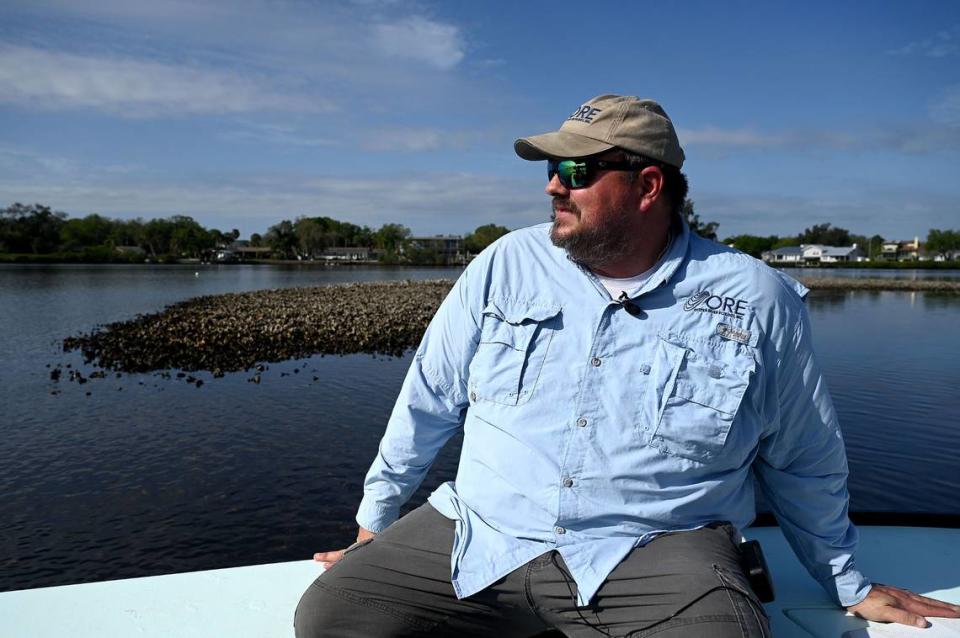
What’s next? Laying a foundation.
Oyster beds grow generation by generation, with new layers of shellfish forming on top of the old ones.
The problem is, much of that old substrate was lost to dredging.
“They’ve lost that self-sustaining ability,” said Charlie Hunsicker, Manatee County’s Natural Resources Director.
Oysters have found ways to survive in smaller numbers in the Manatee River, where they can be found growing on mangrove roots, old tires, crab traps and power poles.
All that’s missing is a hard surface on the river bed for oyster larvae to attach to, grow and begin the process of establishing a healthy reef.
A single female oyster can release millions of eggs, according to the Florida Fish and Wildlife Conservation Commission. So given the right conditions, oysters can come back fast.
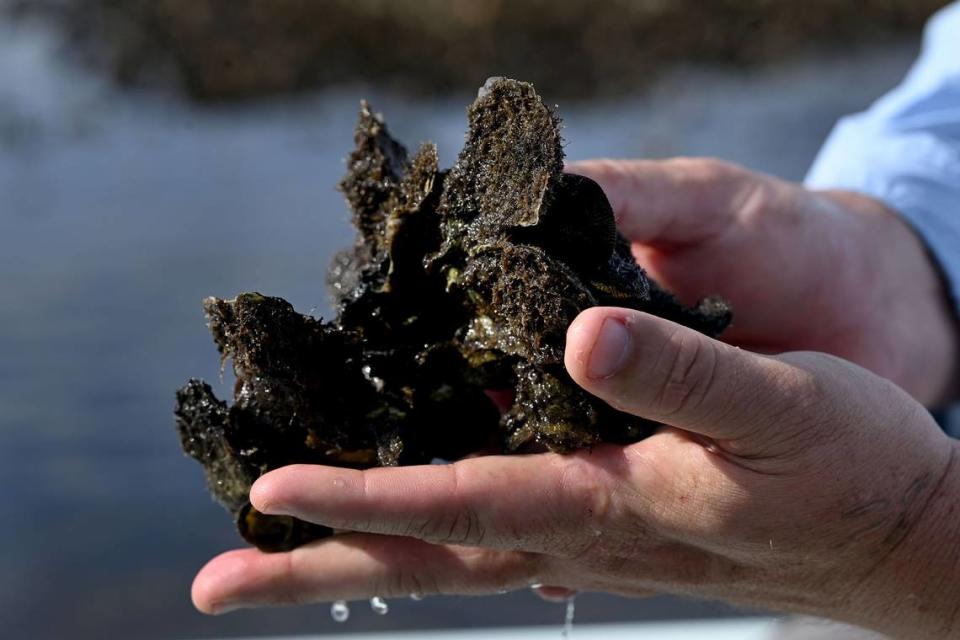
The solution is introducing a new surface for oysters to grow on. Old shell is an ideal, natural candidate.
But it’s also hard to come by, and expensive.
A program to recycle shells from local seafood restaurants is providing one reliable source, but it won’t be enough for large-scale restoration, Moore says.
For now, the most affordable solution he’s found is what he calls “vertical oyster garden anchors.”
It’s his own spin on an oyster propagating method that has been practiced from China to South Carolina, in which old shells are drilled through the center and then placed on a metal stake that can be planted in the river bed.
As baby oysters land on the old shell and grow, they eventually fall to the bottom of the riverbed and form the beginning of a new oyster reef.
“They’re often called ecosystem engineers because they build the habitats themselves,” Moore said. “So I’m saying, let’s put them to work.”
The Florida Department of Agriculture and Consumer Services recently permitted Moore to begin oyster restoration on a 10-acre site in the Manatee River east of the Interstate 75 overpass and the mouth of the Braden River.
Close by, Manatee County Government has a 6-acre plot permitted.
“This is the first aquaculture restoration lease in the entire state dedicated to oysters,” Moore says with pride.
He plans to begin planting oysters in April.
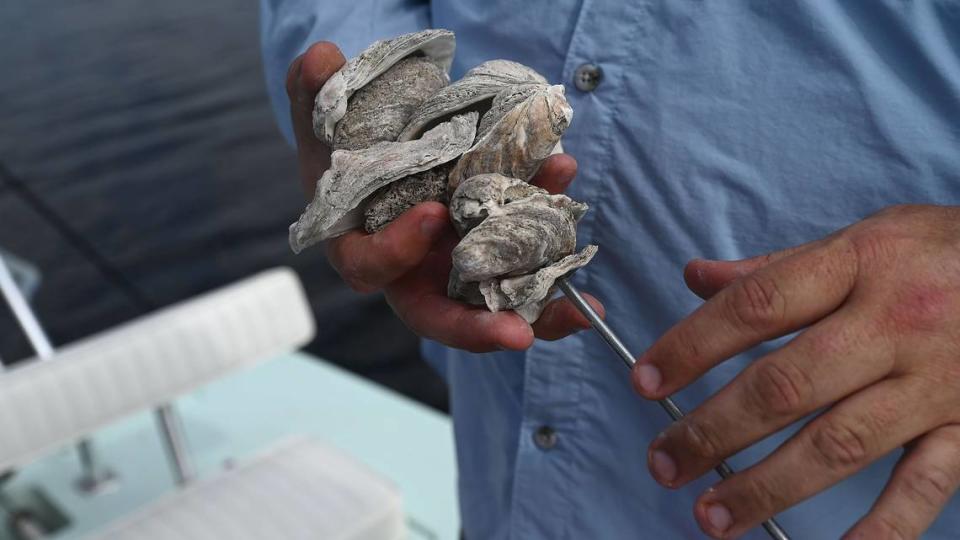
How many oysters to improve water quality?
The Tampa Bay Estuary Program, part of the National Estuary Program instituted to improve water quality, including in the Manatee River, has set a target of restoring 300 acres of local oyster beds by 2050.
Manatee County staff say they will contribute as many acres as possible to that goal.
Hunsicker said the county has about $2 million slated for efforts to improve water quality, including oyster restoration, that is almost entirely funded by grants.
Swanson said the county will soon begin a pilot oyster-planting project, and they expect to add 10-20 more acres of oyster restoration in the Manatee River by summer 2025.
Moore estimates that the Manatee River could eventually support over 400 acres of oyster restoration. But that will require continued funding from grants and support from government leaders.
Will oysters prevent red tide blooms?
“It’s a part of the solution. But it’s not the whole solution by any means,” Moore says.
Oysters can filter some of the nutrients that feed harmful algal bloom out of the water. Widely cited research says that a single adult oyster can filter up to 50 gallons per day, but the number in the wild is between 3 and 12 gallons a day, FWC says.
“Regardless of what that actual number is, if you’re putting enough of them out there, there is definitely a benefit of increased water filtration,” Moore says.
Some of the nutrients are stored in their tissue, but they create a waste product that is still nutrient-rich, Moore says.
But that’s where the beauty of the oyster reef habitat comes into play. Healthy oyster reefs support bacteria that can break down the oyster waste and convert the nitrogen it contains into a form that is unavailable for red tide algae to use as fuel.
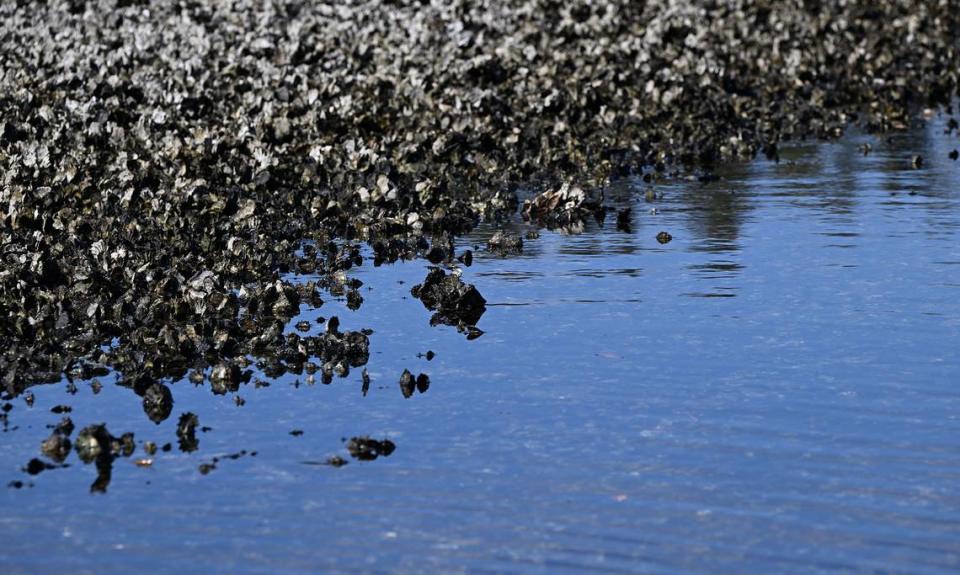
What’s next for local oyster restoration?
Local environmental organizations and municipalities are eagerly jumping on board with oyster restoration efforts.
In addition to Manatee County, Bradenton and Palmetto have also invested in restoration projects.
The Tampa Bay and Sarasota Bay Estuary Programs are also pitching in.
“Oysters are fantastic for fishing because a lot of small fish are attracted to oysters, and the filtering is really important too,” Sarasota Bay Estuary Program executive director Dave Tamasko said. “Once you get oysters really fired up in a place, they create even more oyster reefs.”
Oyster restoration has also found bipartisan political support, from the county commission to federal representatives.
“It’s a feel-good project, but it’s also a quality of life project,” said Commissioner Kevin Van Ostenbridge, who commended county staff for their work to restore the oyster population.
“It’ll help clean up the bay in our region. It’s not going to clean everything up, but it’ll make a difference,” Rep. Vern Buchanan said last year during a tour of local hatchery Two Dock Shellfish.
Locals who live on the water can also help in a small way by installing a vertical oyster garden off of their dock.
